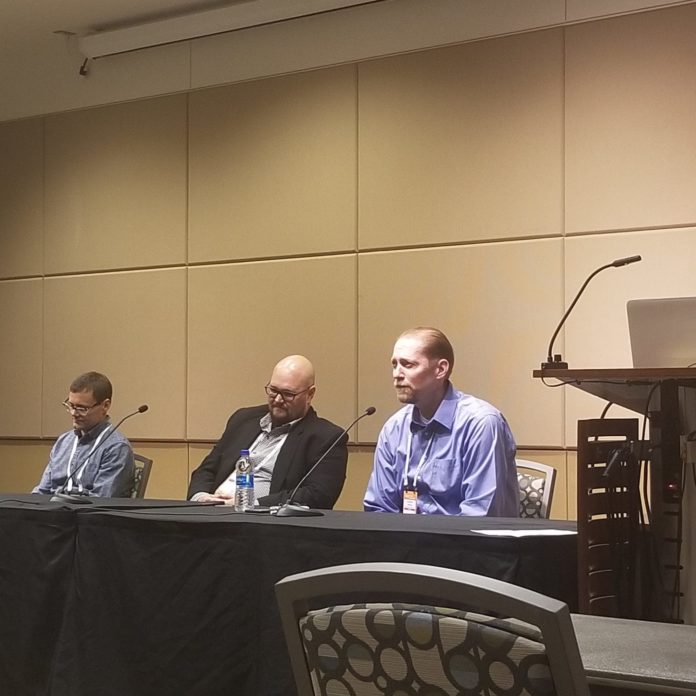PHOENIX—If you’re a regional network operator, how do you choose which key performance indicators are the most useful and efficient for knowing how well your network is actually working? What if you had a chance to compare your network, anonymously, against other regional operators in an apples-to-apples way?
The Competitive Carriers Association’s Business Innovation Group (BIG) has set up just that kind of opportunity through analytics vendor Telsasoft, and during a session at this week’s CCA annual convention, two carriers shared their experiences of using the resulting data and insights.
To date, eighteen CCA carrier members have agreed to contribute their anonymized data on half a dozen KPIs, which Telsasoft makes sure reflect an apples-to-apples comparison. Then participating companies can access data visualization tools to see how their network performance ranks on those KPIs compared to other regional and rural networks, and compare and contrast performance over time. Panelists at CCA emphasized that while participating companies know which data is theirs so they can see how they rank against peers, they don’t know which data is associated with other specific operators. The chosen “symptomatic” KPIs include VoLTE bearer drops (QCI 1), RTP gaps, set-up failures and unavailability, among others.
Nathan Sutter, director of network operations at regional operator NexTech Wireless, pointed out that as networks evolve, so do the available and most relevant KPIs. “Keeping up with those changing KPIs is the most important thing you can do to protect your customer experience,” he added.
Some carriers who are partners in Verizon’s LTE in Rural America (LRA) program rely on standards set by Verizon in order to establish how their networks should be performing and which KPIs are relevant. But it’s valuable to be able to see how comparable small networks are performing across various metrics, according to both Zylka and Sutter.
“It’s important that you have the baseline to say where we are right now and where do we need to head,” said David Zylka, CTO of Carolina West Wireless. He said that the anonymized data available through Telsasoft can help to establish goals and know that they can be achieved, because other small operators are doing it. In addition, Zylka said, such data can be a conversation starter with other carriers about experiences and lessons learned that allow CCA members to help each other to improve the performance of their networks.
And that, ultimately, is what CCA’s BIG would like to see come out of the data-sharing effort: More carriers contributing their data and talking with each other to share knowledge, to improve all of their networks. Zylka urged other CCA member carriers to consider joining the Telsasoft data-sharing initiative. “We’re all in this together, and sharing that information just helps us get that much better, that much quicker,” he said.
In other test news:
–Viavi Solutions said this week that its Viavi Xgig 5P16 platform now supports analyzer bifurcation and multi-user functionality, so that multiple users can conduct simultaneous protocol analysis tests for PCIe 5.0 data traffic at all layers of the stack. “The ability to accommodate multiple users on the same platform, either locally or remotely, creates a wide range of possible testing configurations and enables faster equipment debug and development,” Viavi said. The test company added that semiconductor company Marvell is an early adopter of the upgraded platform.
–Keysight Technologies worked with positioning, navigation and timing company Orolia to develop integrated solutions for testing 5G 5G location-based services (LBS) that are based on satellite-based GNSS technologies. Keysight said that existing users of its 5G device test solutions can upgrade the software in Keysight’s E7515B UXM 5G Wireless Test Platform and combine that with Orolia’s GSG-8 simulator in order to be able to meet GNSS-related 3GPP protocol conformance and carrier acceptance testing requirements.
Keysight also said this week that device manufacturer Oppo has upgraded its 5G communications lab in Shenzen, China, with Keysight’s 5G protocol R&D testing application and channel emulation solutions.
-Electronics component seller Digi-Key is expanding its available services through a partnership with F3 Wireless, which enables Digi-Key customers to consult with RF engineers. The “micro-service,” as Digi-Key is calling it, is available to customers in the U.S., Mexico and Canada and is focused on mitigating risks and ensuring performance, compliance and certification of radio devices. F3 is available to review and consult on schematics with an eye toward threats to radio performance or emissions that might cause issues with certification; device reviews of antenna performance, testability and certification; and manufacturing reviews focused on manufacturability, testability and cost.
“By partnering with Digi-Key, F3 is bringing these bite-sized design services to market for the first time,” said David Sandys, director of technical marketing at Digi-Key Electronics. “RF is a fast-growing, specialized field, and relying on RF experts is the best way to ensure that any product with a radio in it will be compliant and perform as expected. The ability to leverage a knowledgeable RF engineering team helps bring products to market more efficiently, saving both time and money.“

